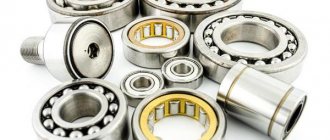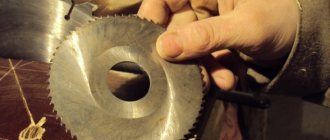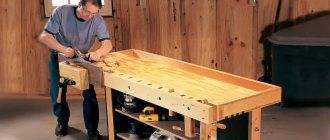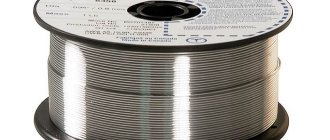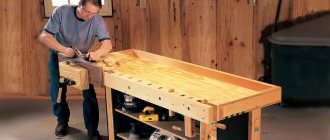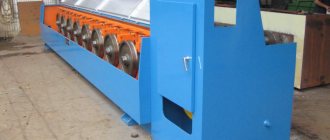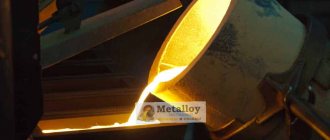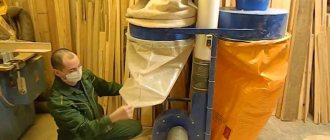Who didn't play with ball bearings as a child? – It was nice to hold perfectly even mini-spheres in your hands, smooth and emitting metallic sounds when moving. Everyone admired them in childhood and even regularly wondered how balls for bearings are created, and how specialists achieve such ideal product parameters. Growing up, many people remain interested and watch videos of how balls for bearings are made and what materials are used for this. And it turns out that the secret is simple, you just need to unravel it and understand the features of all industrial stages of production. And in this article we will try to consider in detail the way to transform ordinary metal wire into perfectly sharpened balls for bearings.
Main stages of production
Balls for bearings are manufactured in industrial conditions. For their production, special high-precision equipment is used, which is capable of determining the parameters of the parts corresponding to the technical specifications: weight, size. These characteristics directly depend on the dimensions of the bearing itself, its area of application and the width of the race.
For ease of marking, the rolling bodies are calibrated. The most popular products are those whose diameters range from 1,588–2,000 mm. However, it is possible to manufacture in other dimensional parameters.
The material for production is calibrated wire coil. During the work process, it is cut into rods and only then the machines for making balls are started.
Bearing Ball Size Chart
| International designation | Analogue (GOST) | Ball diameter | Number of balls |
| 607 | 17 | 3,97 | 6 |
| 608 | 18 | 3,97 | 6 |
| 623 | 23 | 1,59 | 7 |
| 624 | 24 | 2,38 | 6 |
| 625 | 25 | 3,18 | 6 |
| 626 | 26 | 3,97 | 6 |
| 627 | 27 | 3,97 | 7 |
| 629 | 29 | 4,76 | 7 |
| 634 | 34 | 3,18 | 6 |
| 635 | 35 | 3,97 | 6 |
| 693 | 1000093 | 1,59 | 6 |
| 694 | 1000094 | 2 | 7 |
| 695 | 1000095 | 2 | 8 |
| 696 | 1000096 | 2,38 | 8 |
| 697 | 1000097 | 3 | 7 |
| 698 | 1000098 | 3 | 8 |
| 699 | 1000099 | 3,5 | 7 |
| 6000 | 100 | 4,76 | 7 |
| 6001 | 101 | 4,76 | 8 |
| 6002 | 102 | 4,763 | 8 |
| 6003 | 103 | 4,763 | 10 |
| 6004 | 104 | 6,35 | 9 |
| 6005 | 105 | 6,35 | 10 |
| 6006 | 106 | 7,14 | 11 |
| 6007 | 107 | 7,94 | 11 |
| 6008 | 108 | 7,94 | 12 |
| 6009 | 109 | 8,73 | 13 |
| 6010 | 110 | 8,73 | 12 |
| 6011 | 111 | 10,32 | 13 |
| 6012 | 112 | 11,11 | 12 |
| 6013 | 113 | 10,32 | 15 |
| 6014 | 114 | 12,3 | 13 |
| 6015 | 115 | 12,3 | 14 |
| 6016 | 116 | 13,5 | 14 |
| 6017 | 117 | 13,5 | 14 |
| 6018 | 118 | 14,3 | 15 |
| 6010 | 119 | 14,288 | 14 |
| 6020 | 120 | 14,3 | 15 |
| 6021 | 121 | 17,462 | 13 |
| 6022 | 122 | 18,256 | 15 |
| 6024 | 124 | 18,256 | 15 |
| 6026 | 126 | 20,638 | 14 |
| 6028 | 128 | 20,638 | 15 |
| 6030 | 130 | 22,225 | 16 |
| 6032 | 132 | 23,812 | 15 |
| 6034 | 134 | 26,988 | 14 |
| 6036 | 136 | 30,162 | 14 |
| 6038 | 138 | 30,162 | 14 |
| 6040 | 140 | 33,338 | 13 |
| 6044 | 144 | 35,719 | 13 |
| 6048 | 148 | 36,512 | 14 |
| 6052 | 152 | 41,275 | 14 |
| 6056 | 156 | 41,275 | 15 |
| 6200 | 200 | 5,95 | 6 |
| 6201 | 201 | 5,56 | 7 |
| 6202 | 202 | 5,95 | 8 |
| 6203 | 203 | 7,14 | 7 |
| 6204 | 204 | 7,94 | 8 |
| 6205 | 205 | 7,94 | 9 |
| 6206 | 206 | 9,53 | 9 |
| 6207 | 207 | 11,11 | 9 |
| 6208 | 208 | 12,7 | 9 |
| 6209 | 209 | 12,7 | 9 |
| 6210 | 210 | 12,7 | 10 |
| 6211 | 211 | 14,29 | 10 |
| 6212 | 212 | 15,88 | 10 |
| 6213 | 213 | 16,67 | 10 |
| 6214 | 214 | 17,46 | 10 |
| 6215 | 215 | 17,46 | 11 |
| 6216 | 216 | 19,05 | 10 |
| 6217 | 217 | 19,84 | 11 |
| 6218 | 218 | 22,23 | 10 |
| 6219 | 219 | 23,823 | 10 |
| 6220 | 220 | 25,4 | 10 |
| 6221 | 221 | 26,988 | 10 |
| 6222 | 222 | 28,575 | 10 |
| 6224 | 224 | 30,162 | 10 |
| 6226 | 226 | 28,575 | 11 |
| 6228 | 228 | 28,575 | 11 |
| 6230 | 230 | 33,338 | 11 |
| 6232 | 232 | 34,925 | 11 |
| 6234 | 234 | 41,275 | 10 |
| 6236 | 236 | 38,1 | 11 |
| 6244 | 244 | 44,45 | 11 |
| 6300 | 300 | 7,14 | 6 |
| 6301 | 301 | 7,94 | 6 |
| 6302 | 302 | 7,94 | 7 |
| 6303 | 303 | 9,53 | 6 |
| 6304 | 304 | 9,53 | 7 |
| 6305 | 305 | 11,51 | 7 |
| 6306 | 306 | 12,3 | 8 |
| 6307 | 307 | 14,29 | 7 |
| 6308 | 308 | 15,08 | 8 |
| 6309 | 309 | 17,46 | 8 |
| 6310 | 310 | 19,05 | 8 |
| 6311 | 311 | 20,64 | 8 |
| 6312 | 312 | 22,23 | 8 |
| 6313 | 313 | 23,81 | 8 |
| 6314 | 314 | 25,4 | 8 |
| 6315 | 315 | 26,99 | 8 |
| 6316 | 316 | 28,58 | 8 |
| 6317 | 317 | 30,16 | 8 |
| 6318 | 318 | 31,75 | 8 |
| 6319 | 319 | 34,925 | 8 |
| 6320 | 320 | 36,51 | 8 |
| 6321 | 321 | 38,1 | 8 |
| 6322 | 322 | 41,275 | 8 |
| 6324 | 324 | 42,862 | 8 |
| 6326 | 326 | 44,45 | 8 |
| 6330 | 330 | 50,8 | 8 |
| 6403 | 403 | 12,7 | 6 |
| 6405 | 405 | 16,67 | 6 |
| 6406 | 406 | 19,05 | 6 |
| 6407 | 407 | 20,64 | 6 |
| 6408 | 408 | 22,23 | 6 |
| 6409 | 409 | 23,02 | 7 |
| 6410 | 410 | 25,4 | 7 |
| 6411 | 411 | 26,99 | 7 |
| 6412 | 412 | 28,58 | 7 |
| 6413 | 413 | 30,16 | 7 |
| 6414 | 414 | 34,93 | 7 |
| 6416 | 416 | 38,1 | 7 |
| 6417 | 417 | 39,69 | 7 |
| 6900 | 1000900 | 3,97 | 7 |
| 6901 | 1000901 | 3,97 | 7 |
| 6902 | 1000902 | 3,18 | 12 |
| 6903 | 1000903 | 3,5 | 11 |
| 6904 | 1000904 | 5 | 10 |
| 6905 | 1000905 | 5 | 12 |
| 6906 | 1000906 | 5 | 13 |
| 6907 | 1000907 | 5,95 | 13 |
| 6908 | 1000908 | 6,35 | 14 |
| 6909 | 1000909 | 7,14 | 13 |
| 6911 | 1000911 | 6,35 | 18 |
| 6912 | 1000912 | 7,14 | 19 |
| 6913 | 1000913 | 7,144 | 19 |
| 6915 | 1000915 | 8,731 | 18 |
| 6916 | 1000916 | 9,525 | 17 |
| 6917 | 1000917 | 10,319 | 17 |
| 6918 | 1000918 | 10,319 | 18 |
| 6919 | 1000919 | 10,319 | 18 |
| 6920 | 1000920 | 12,7 | 16 |
| 6921 | 1000921 | 12,7 | 17 |
| 6922 | 1000922 | 11,509 | 19 |
| 6924 | 1000924 | 13,494 | 18 |
| 6926 | 1000926 | 15,081 | 18 |
| 6928 | 1000928 | 11,509 | 19 |
| 6930 | 1000930 | 17,462 | 18 |
| 6832 | 1000932 | 17,462 | 18 |
| 6934 | 1000934 | 17,462 | 20 |
| 16002 | 7000102 | 4,76 | 8 |
| 16003 | 7000103 | 5,16 | 9 |
| 16004 | 7000104 | 5,556 | 10 |
| 16005 | 7000105 | 5,56 | 11 |
| 16006 | 7000106 | 5,56 | 14 |
| 16007 | 7000107 | 5,56 | 15 |
| 16008 | 7000108 | 6,35 | 16 |
| 16009 | 7000109 | 6,35 | 17 |
| 16010 | 7000110 | 6,35 | 18 |
| 16011 | 7000111 | 7,14 | 17 |
| 10012 | 7000112 | 7,14 | 18 |
| 16013 | 7000113 | 7,14 | 19 |
| 16014 | 7000114 | 7,14 | 18 |
The main processing steps end here
Important! As a final effect, a finishing operation can be additionally undertaken. It is necessary if increased demands are placed on the accuracy of the balls themselves.
You can order balls for bearings in Moscow on the website of The Big Bearing Store. The catalog contains a large assortment of rolling elements of various calibers and precision. It is possible to select consumables such as lubricants and adapter sleeves. If necessary, you can come to the office with a bearing sample to select the required type of part. The address is listed on the website in the “Contacts” section.
Preparatory process
The main condition for assembling bearing units in production is the use of a shaft, which makes the assembly process quick and of high quality. Before performing this procedure, you must carefully check the quality of the surfaces of the shaft and all rings. This will help eliminate the fact that the already assembled bearing will have noticeable damage - scratches, chips, cracks, traces of corrosion, etc. The surface must be wiped, dried and treated with special lubricants.
Mechanical assembly method
The presented principle makes it possible to assemble and disassemble parts that have relatively small dimensions. The internal diameter of each model should not exceed 60 mm. You can watch the assembly procedure in a video on the Internet. The main condition of the presented principle is: the force during mechanical coupling of two rings (inner and outer) should not be transmitted in any way to the separator. It should only affect the ends of the rings.
The next equally important rule is that it is not recommended to knock on the ring. Inflicting light blows is only possible if auxiliary material is used. This may be a bushing made of a material that is soft to the touch. In factories, all processes are performed by automated machines on conveyor belts.
The assembly sequence is as follows: 1. The outer ring is installed in a vertical position, and its groove inside is treated with a thick lubricant. However, it is necessary to lubricate not to the end of the circle, but to 3/4 of its surface. 2. Then, using tweezers, balls are inserted one by one and “dipped” into the lubricant. 3. When assembling the radial bearing, you will need to attach the inner ring to the balls, pressing it lightly. After this, carefully scroll it in a circle - this will help to evenly distribute all the parts into their places. 4. Then, the separator is fixed, which also needs to be rotated so that the balls go into the recess.
When each of the balls is snapped into place, the lubricant is removed using dry material. To completely wash off the remaining lubricant, you can use kerosene, which will help prepare the device for the upcoming work.
Factories
In Russia there are more than two dozen large enterprises that produce such products. We will give some examples:
- . JSC "Moscow Bearing" Specializes in the production of parts for metro construction and railways.
- . OJSC GPZ-2 is the oldest plant, operating since 1916. It produces a huge range of small-sized products from 4 to 6770 grams. Supplies products to 50 countries.
- . Saratov has been operating since 1941. The product for consumers is balls.
- . Samara "ZPON" produces roller mechanisms of various types (4000 items). It has equipment production and its own research base.
- . Tomsk "ROLTOM" GPZ-5. It produces mechanisms with miniature sizes with a diameter of 2 mm to large ones - 22 cm.
- . Yekaterinburg plant No. 6 specializes in the production of spherical double-row products with increased radial load.
- . Baku gas processing plant-7.
- . Kharkovsky No. 8. The production range of products is from 30 g to 45 kg.
- . Samara plant number 9 produces roller units.
- . GPZ-10 in Rostov-on-Don has been operating since 1938 and produces parts for agricultural machinery, processing equipment and metallurgy.
Products come to the Russian market from factories in different countries. The most popular bearings are made:
- . In the People's Republic of China by AAA. It specializes in the manufacture of parts for the automotive industry.
- . And India at the ABC Bearings concern. The company has been operating successfully for more than 50 years and imports its products to many countries around the world.
- . In Slovakia by AKE. This new brand is not inferior in quality to famous brands. Every year the range of manufactured products increases, the cost of which is significantly lower than that of other imported analogues.
Device
It is not possible to describe all the diversity. Fundamentally, this mechanism consists of an external and internal support (they can be replaced by a housing part), a sliding gasket (lubricant, a separator with rolling elements, a bushing).
The most common type is done like this:
- . two washers with grooves having the required radius of curvature;
- . balls fixed with a special device at the same distance from each other along the entire perimeter;
- . When the clips move, friction decreases sharply.
Stamping and work with blanks
The production of balls for bearings begins with the preparation of the material. The basis is steel wire. Its diameter is slightly larger than the size of the finished ball part. To make high-quality workpieces, craftsmen use a cold heading machine or a cross-helical rolling machine. With its help, piece workpieces are made. Moreover, the operating speed often reaches up to 1000 pieces. preparations in 1 minute.
However, the resulting blanks differ in certain deviations from the required shapes: • annular bead, which is often called a “saturate” ring; • center protrusions. The next process, during which you need to run in, involves the use of disk matrices with grooves. The blanks are fixed between them and rolled until they have a perfectly even shape. To obtain a spherical shape, craftsmen use high pressure, which reaches 20 tons. The resulting balls are from rolling bearings with a tolerance of 100 microns from the original size of the finished product.
Materials
An important question for production is what steel are the bearing races made of? The most common material is branded:
- . ШХ15;
- . ShH15SG;
- . ShH20SG;
- . ШХ4.
They differ in the content of technological additives. The composition includes magnesium, silicon, carbon, chromium in amounts up to 2 percent and impurities of sulfur, phosphorus, nickel, copper in very limited quantities. Hardness is acquired by heat treatment.
For products that can withstand heavy loads, it is necessary to have a strong contact surface and a plastic middle. In this case, steel grades are used:
- . 15G1;
- . 18HGT;
- . 20Х2Н4А.
The planes are cemented. In this case, strength is achieved from 59 to 66 HRCe. The core remains softer with a score of around 36. The production process is slightly different from before.
Industry requires units to operate in aggressive environments. For production in this case, steel grades 95Х18Ш and 110Х18МШД are used.
In foundries, in heat treatment units, products made from heat-resistant material are needed. In Russia they use 8Х4В9Ф2Ш and 8Х4М4В2Ф1Ш.
Leading manufacturers
Among the world's famous brands, experts especially highlight the following manufacturers:
- Swedish industrial group SKF supplies products to 130 countries;
- German manufacturer FAG;
- Slovak concern Kinex
- French company SNR - considered the largest supplier for Europe;
- Japanese companies NSK, NTN and Koyo;
- American concern TIMKEN
To produce high-quality products, strict adherence to technological standards at all stages of production is mandatory. Only well-known global brands usually meet this requirement. The Ukrzakhidpostach company supplies bearings exclusively from leading brands, the quality of which has been tested by time.
Kinds
These mechanisms can be divided into groups according to the direction of the load, according to the elements on which the holders rest, according to the presence or absence of a rotating spacer and according to the material of manufacture.
What are they made of and how are they made?
The product can be radial and supporting, with full or partial rotation. Depending on the operating conditions, it is manufactured in the form of: outer and inner races (lower and upper), sliding sleeve (washer), lubrication system (forced, natural, air).
Polished surfaces, due to the lubricant or due to the physical properties of the gaskets, provide long-lasting easy sliding. Raw materials for production: steel, cast iron, bronze, fluoroplastic, babbitt, aluminum, ceramics. Pairs with a minimum friction coefficient are selected. What metal the bearing bushing is made of directly determines in which cage it will rotate.
Rolling
Such units are divided into radial, thrust and complex. This determines the direction of the load. The first are divided into three main classes: ball, roller, needle. These species can be with or without restrictive rings, with one or two anthers, and completely open.
The second type is created on the basis of spherical elements, cylindrical and conical rollers. Completely collapsible varieties are available. The third one combines the qualities of the first and second in terms of perceived effort. There are also open and closed types.
Depending on the materials for the manufacture of rolling bearings, there are several subclasses:
- . standard (most common);
- . designed for increased loads;
- . designed for extreme temperatures;
- . resistant to aggressive environments.
For special conditions (ultra-high rotation speeds, strong heating, the need to operate in the presence of acids and alkalis), products made of ceramics, silicon nitride, and plastics are used. There are models where the sliding layer is a gas or a magnetic field.
